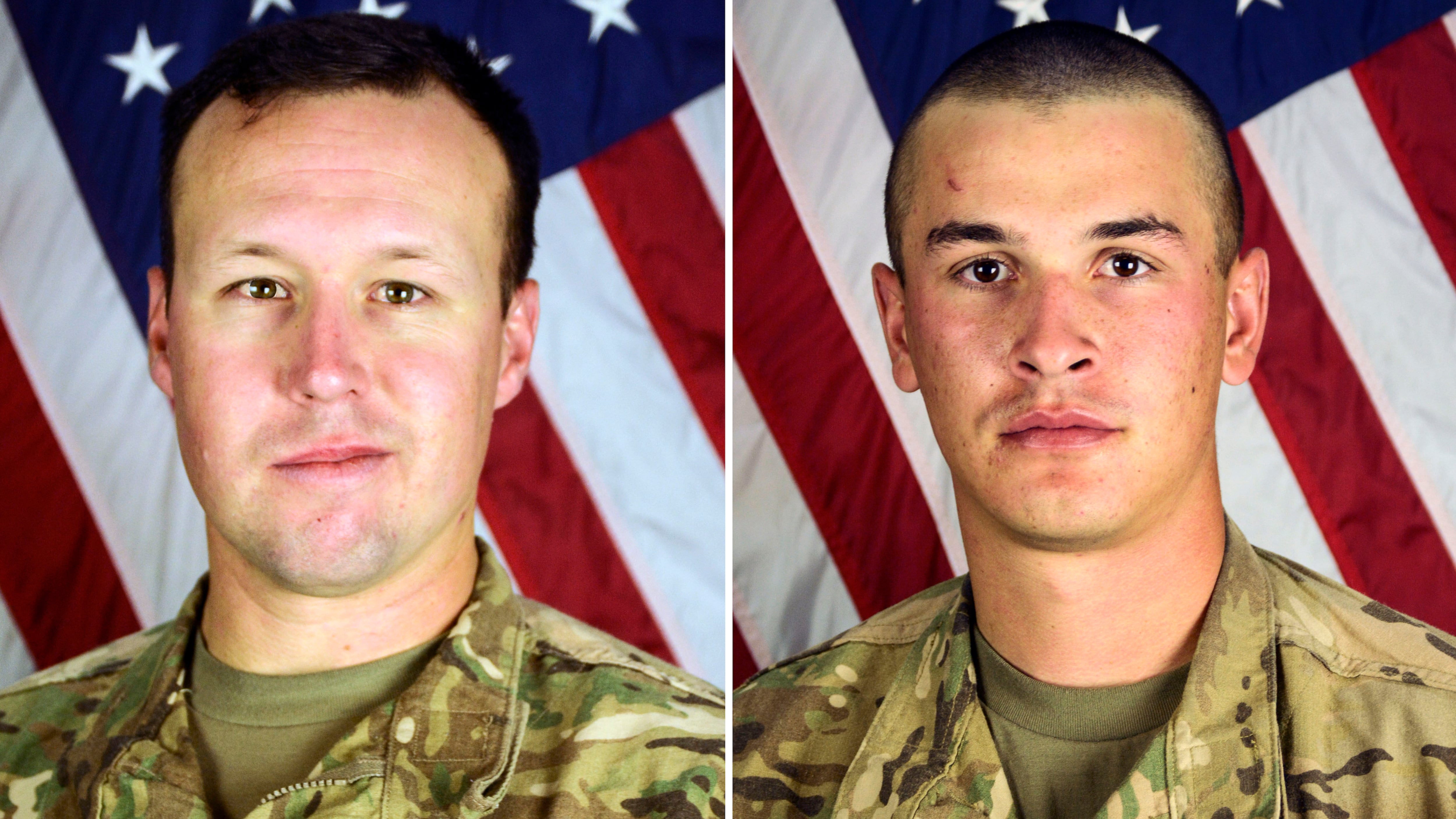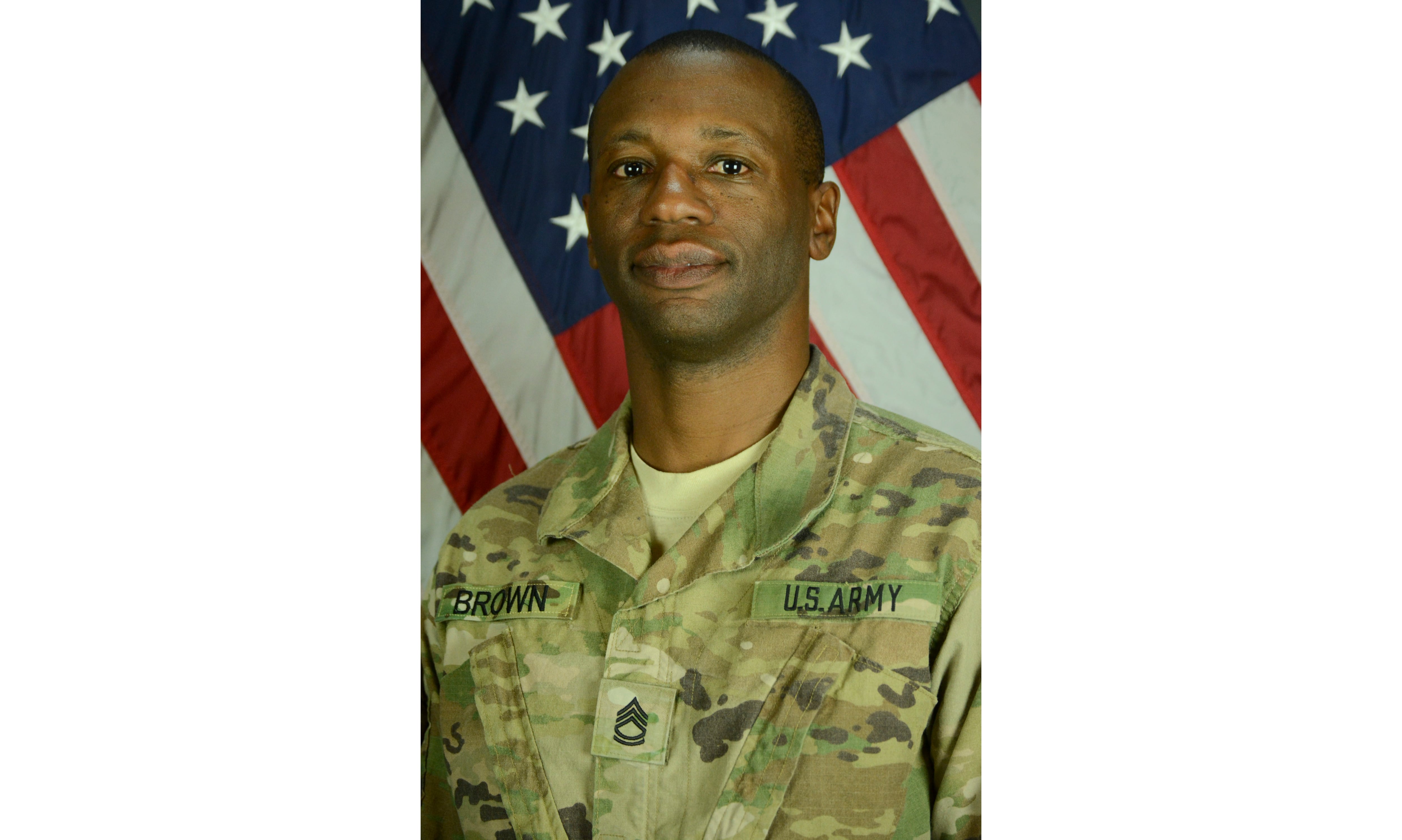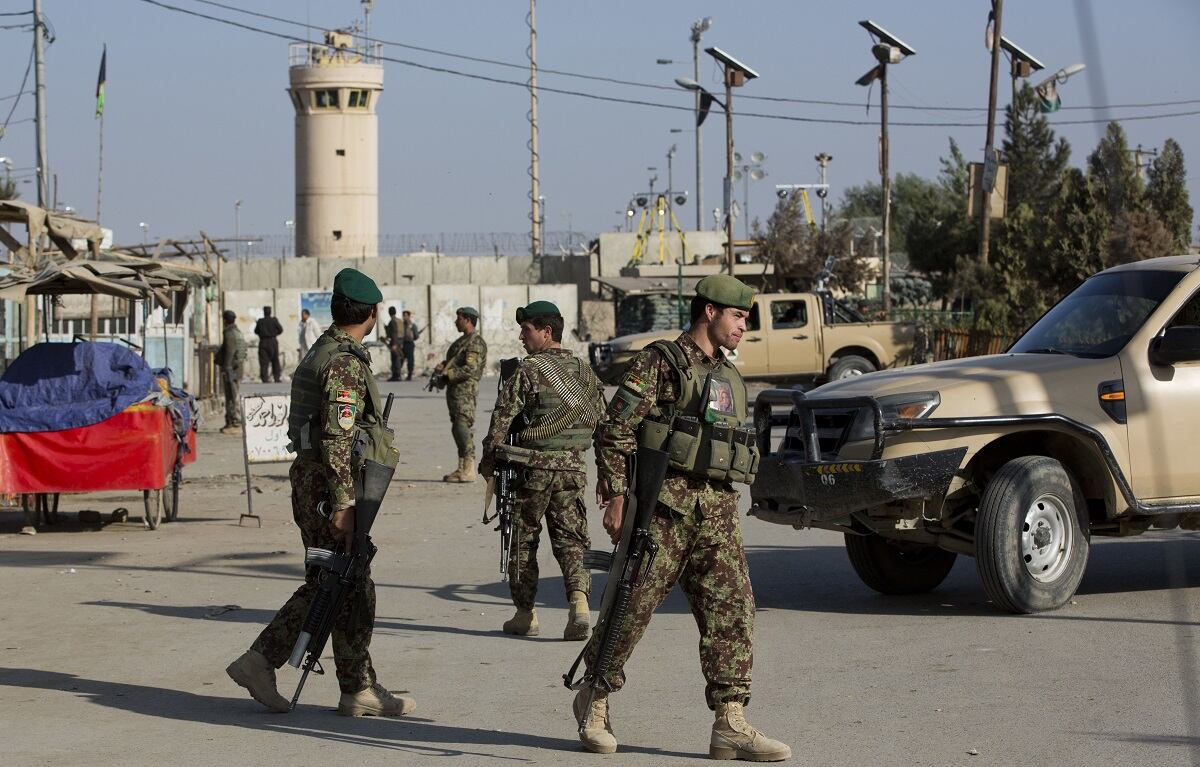A local Afghan worker who killed five and wounded 16 in a suicide bombing on Bagram Airfield, Afghanistan, last year spent about four months building his suicide vest in his work space on base, according to a U.S. Forces-Afghanistan investigation.
Ahmad Nayeb, a former Taliban insurgent hired by a contractor in 2011 to work in Bagram’s non-tactical vehicle yard, detonated the bomb as base personnel were gathering for a Veterans Day 5K fun run before dawn on Nov. 12, 2016, the investigation found.
“Though the ultimate target for the attack remains indeterminable, the group of soldiers and Fluor employees unwittingly induced the assailant to detonate his suicide vest, likely preventing a far greater tragedy,” Maj. Gen. Thomas James, the investigating officer, wrote in his remarks.
All told, Nayeb killed himself, three American soldiers and two civilian contractors, while injuring 16 more American soldiers and one Polish soldier.
RELATED


RELATED

Sgt. John Perry, 30, and Pfc. Tyler Iubelt, 20, of the 1st Cavalry Division’s 1st Special Troops Battalion, 1st Sustainment Brigade, died in the attack.
Sgt. 1st Class Allan Brown, also of the 1st Cavalry Division, died Dec. 6, 2016, at Walter Reed National Medical Center, where he had been hospitalized since the attack.
‘Culture of complacency’
Though Alliance Project Services, Inc., a subcontractor to Virginia-based Fluor Corp., followed proper security procedures when hiring Nayeb, James found that the contractor did not take accountability for local national employees in terms of supervision or job performance.
There was a “pervasive ‘culture of complacency’ and indiscipline — specifically within the civilian portions of the base — that permeated the forward operating base,” he wrote.
Nayeb, a former Taliban insurgent, had completed the required Afghanistan Peace and Integration Program in order to work on Bagram, where three of his cousins also worked.
But no one had flagged Bagram’s counterintelligence shop that there was a former insurgent working at the non-tactical vehicle yard.
Further, Fluor did not escort local national employees from the front security gate — where they were searched before each shift — to their work spaces, and did not ensure that they left after every shift.
Nayeb, in particular, had a reputation for slacking off and going missing for long stretches.
“No formal counseling or disciplinary action can be found for Nayeb despite reported instances of sleeping at work and absences without authority,” James wrote.

There was confusion among contracting management with respect to who was supposed to be supervising him, he added.
According to the investigation, Nayeb also checked out multiple tools that were not associated with his vehicle maintenance job, and there were no regulations about restricted access to them.
For example, the investigation found, he checked out a multimeter nine times, for up to six hours at a time. The device is meant to measure voltage, current and resistance, essential to bomb-making.
Investigators concluded that Nayeb brought the vest into work and then spent about four months weaponizing it, using tools and parts that were available in the vehicle yard.
He likely smuggled small bits of homemade explosives in his pockets, disguising them in containers that would not have alerted base security, according to the report.
The investigation did address whether officials had any prior indication that Nayeb was still a radical, but James’ comments were redacted.
Making changes
The report praised the emergency and mass casualty response by base security and medical personnel, as well as the commander’s ability to keep the situation as organized as possible after the detonation.
But in general, James wrote, Bagram needed to better organize its security and counterintelligence efforts, as well as work with contractors to provide more oversight of their employees.
For example, Bagram’s security forces are made up of separate multinational uniformed personnel and contractors, and both are understaffed for the amount of work they have to do.
Mission command and intelligence operations also need streamlining and better communication, he said, on top of disjointed force protection and anti-terrorism structure.
However, since taking over command at Bagram the previous September, the base’s current leadership had been working to reverse that culture of complacency, James wrote.
Meghann Myers is the Pentagon bureau chief at Military Times. She covers operations, policy, personnel, leadership and other issues affecting service members.




